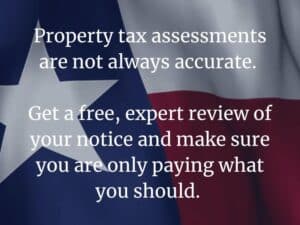Property taxes are a significant expense for homeowners and business owners, calculated based on the assessed value of your property as determined by your local appraisal district. When this value is unfairly high—exceeding the property’s fair market value—you could be overpaying hundreds or thousands of dollars annually. Filing a property tax protest allows you to challenge an inflated assessment, correct errors, and secure exemptions, potentially saving substantial amounts. While the process requires time and effort, the financial rewards and long-term benefits make it well worth it. This comprehensive guide explores why property tax protests are a smart investment, offering actionable insights and real-world examples to help you save money.
The Financial Case for Property Tax Protests
Protesting an unfair property tax assessment can yield significant savings, both immediately and over time. Here’s why the effort pays off:
1. Immediate Tax Savings
- Why It Matters: Lowering your assessed value directly reduces your tax bill, putting money back in your pocket. Even a modest reduction can save hundreds annually.
- Details: Property taxes are calculated as assessed value multiplied by the local tax rate (e.g., 2.5%). A $50,000 reduction on a $500,000 assessment saves $1,250 yearly at a 2.5% rate.
- Example: Correcting a $450,000 assessment to $410,000 based on comparable sales saves $1,000 annually, covering the cost of your time or a consultant’s fee.
- Key Insight: Savings from a single protest can outweigh the effort, especially for high-value properties.
2. Long-Term Savings Through Precedent
- Why It Matters: A successful protest often sets a lower baseline for future assessments, as districts may carry forward the adjusted value, compounding savings.
- Details: Appraisal districts typically build on prior valuations, so a reduction in 2025 can lower taxes for years, barring major market shifts or improvements.
- Example: A $40,000 reduction on a $460,000 home saves $1,000 yearly and prevents future overassessments, potentially saving $10,000 over a decade.
- Key Insight: Protests create a ripple effect, protecting your finances long-term.
3. Correcting Errors for Fairness
- Why It Matters: Errors in property records (e.g., overstated square footage) inflate assessments, and protests fix these, ensuring you pay only what’s fair.
- Details: Common errors include incorrect lot size, extra bedrooms, or missing depreciation. Correcting them can yield significant reductions.
- Example: Fixing a 200-square-foot overstatement at $150 per square foot reduces a $430,000 assessment by $30,000, saving $750 yearly at a 2.5% rate.
- Key Insight: Protests ensure accuracy, preventing ongoing overpayment.
4. Securing Exemptions for Additional Savings
- Why It Matters: Protests provide an opportunity to verify or apply for exemptions (e.g., homestead, senior, disabled veteran), further lowering your taxable value.
- Details: A homestead exemption might reduce your taxable value by $50,000, saving $1,250 yearly at a 2.5% rate, but you must apply proactively.
- Example: Combining a $30,000 protest reduction with a $50,000 homestead exemption saves $2,000 annually on a $420,000 home.
- Key Insight: Protests maximize savings by pairing reductions with exemptions.
5. Protecting Property Value Perception
- Why It Matters: An inflated assessment can signal an overvalued property, deterring buyers or affecting refinancing. Protests align the assessment with market reality.
- Details: Buyers and lenders often review tax records, and a high assessment may suggest an unrealistic asking price.
- Example: Lowering a $480,000 assessment to $440,000 reflects true market value, aiding a future sale at $445,000 without buyer skepticism.
- Key Insight: Protests maintain a realistic valuation, benefiting future transactions.
Beyond Financial Benefits: Additional Incentives
Protests offer more than just monetary rewards, making the effort worthwhile in broader ways:
1. Ensuring Fairness in Taxation
- Why It Matters: Protests hold appraisal districts accountable, ensuring your property isn’t taxed disproportionately compared to similar properties.
- Details: In states like Texas, “unequal appraisal” protests compare your assessment to lower-valued similar properties, enforcing equity.
- Example: If your home is assessed at $450,000 but five similar homes are at $410,000, an unequal appraisal protest could save $1,000 yearly.
- Key Insight: Protests promote a fair tax system, benefiting you and your community.
2. Gaining Financial Control
- Why It Matters: Protesting empowers you to take control of a major expense, reducing reliance on unpredictable tax increases.
- Details: Property taxes often rise with market trends, but protests mitigate hikes by anchoring your value to evidence like comps or condition issues.
- Example: A protest caps a $470,000 assessment at $430,000, shielding you from a 10% market-driven increase costing $1,000 more yearly.
- Key Insight: Protests give you agency over your tax burden.
3. Minimal Investment for High Returns
- Why It Matters: The time and cost of protesting are low compared to potential savings, with many protests requiring only basic research.
- Details: Most districts offer online filing, and evidence like comps or photos is accessible via public records or a realtor.
- Example: Spending 15 hours gathering comps and $50 on a filing fee yields a $40,000 reduction, saving $1,000 yearly—a 20x return on the fee.
- Key Insight: Protests are a high-reward, low-risk endeavor.
How to Make Your Protest Effort Pay Off
To maximize the benefits of a property tax protest, follow these strategic steps, informed by industry best practices:
1. Act Promptly to Meet Deadlines
- Why It Works: Filing by the deadline (typically May 15th or 30 days from your appraisal notice) preserves your appeal rights.
- How to Do It:
- Review your notice for the assessed value, errors, and deadline.
- File early (e.g., by April 25) using the district’s form, available online or by request, to gain preparation time.
- Submit online, by certified mail, or in person, paying any fee (often $10–$50).
- Example: Filing by April 20 secures a May informal review, avoiding a missed May 15th deadline that costs $1,250 in overpaid taxes.
- Tip: See “Why Deadlines Matter in Property Tax Protests” for more.
2. Gather Strong Evidence
- Why It Works: Compelling evidence like comparable sales (comps), condition issues, or errors convinces appraisers to lower your value.
- How to Do It:
- Comps: Collect 3–6 recent sales (6–12 months) within a half-mile, similar in size, age, and condition, from MLS or county records. Adjust for differences (e.g., subtract $5,000 for a comp’s extra bathroom).
- Condition: Document issues (e.g., leaky roof) with timestamped photos and 1–2 contractor repair estimates.
- Errors: Provide proof of inaccuracies (e.g., a survey correcting 2,500 sq ft to 2,300 sq ft).
- Unequal Appraisal: Compile a table of 5–10 similar properties with lower assessments from the district’s database.
- Example: Three comps at $405,000–$415,000 and a $12,000 repair estimate support a $410,000 value vs. a $450,000 assessment, saving $1,000 yearly.
- Tip: Use reliable data sources, avoiding sites like Zillow.
3. Organize Your Case Professionally
- Why It Works: A clear, concise evidence packet respects the limited time of appraisers and Appraisal Review Board (ARB) members ( 5– 7 minutes per case).
- How to Do It:
- Create a binder or digital folder with:
- A one-page summary proposing your value (e.g., “I request $420,000 based on comps”).
- Tables for comps, unequal appraisals, and errors.
- Labeled photos and repair estimates.
- A map showing comps’ locations.
- Use visuals (e.g., charts, highlighted maps) for clarity.
- Bring extra copies for reviews.
- Create a binder or digital folder with:
- Example: A binder with three comps and a repair estimate secures a $40,000 reduction from $460,000, saving $1,000 yearly.
- Tip: See “Secrets to a Successful Property Tax Protest” for presentation tips.
4. Leverage Informal and Formal Reviews
- Why It Works: Informal reviews resolve many protests quickly, while ARB hearings offer a second chance with an independent panel.
- How to Do It:
- Informal Review: Present your evidence in 10–15 minutes, focusing on data (e.g., comps, errors). Be polite and open to negotiation.
- ARB Hearing: Deliver a 5–7 minute presentation with visuals, answering questions factually (e.g., “My comps are recent and nearby”).
- Example: An informal review lowers a $445,000 assessment to $415,000 based on comps, saving $750 yearly without an ARB hearing.
- Tip: Practice your pitch to stay concise.
5. Consider Professional Help for Complex Cases
- Why It Works: Tax consultants or appraisers bring expertise and premium data, ideal for high-value or commercial properties.
- How to Do It:
- Hire a consultant with local ARB experience.
- Obtain a professional appraisal ($500–$2,000) for unique properties.
- Weigh costs vs. savings (e.g., $500 fee for $2,000 yearly savings).
- Example: A consultant reduces a $1 million commercial assessment by $100,000 could save you $2,500 yearly in property taxes.
- Tip: Check success rates before hiring, as advised in “Understanding Commercial Property Tax Assessments.”
6. Follow Up to Secure Savings
- Why It Works: Verifying reductions and applying exemptions ensures your tax bill reflects all savings.
- How to Do It:
- Check the district’s website or decision letter for the new value.
- Apply for exemptions (e.g., homestead) by the deadline, often April 30 or with your protest.
- Save evidence for future protests.
- Example: A $30,000 reduction plus a $50,000 homestead exemption saves $2,000 yearly on a $420,000 home.
- Tip: Monitor next year’s notice, per “Common Mistakes to Avoid in Property Tax Protests.”
Real-World Example
Consider Lisa, a homeowner whose property is assessed at $490,000, but she believes it’s worth $445,000:
- Reviews Notice: Spots a May 15 deadline and a 2,600 sq ft error (actual: 2,400 sq ft).
- Files Early: Submits a protest by April 20, citing market value and unequal appraisal.
- Gathers Evidence: Collects three comps at $440,000–$450,000, a $15,000 roof repair estimate, and a survey correcting square footage.
- Organizes Case: Presents a binder with a summary, comp table, photos, and a map, proposing $445,000.
- Informal Review: Secures a $45,000 reduction to $445,000, saving $1,125 at a 2.5% tax rate.
- Follows Up: Confirms the value, applies for a homestead exemption ($50,000), and saves another $1,250.
Lisa’s 15-hour effort and $50 fee yield $2,375 in annual savings, a $23,750 value over a decade, proving the protest’s worth.
Why the Effort Is Worth It
Property tax protests are worth the effort because they deliver immediate and long-term savings, correct unfair assessments, secure exemptions, and protect property value perception. Protests also empower you to ensure fairness and control costs in a rising tax environment.
Taking the First Step
Start by reviewing your 2025 appraisal notice, mailed in spring, for the assessed value, errors, exemptions, and protest deadline (typically May 15 or 30 days from the notice). File your protest early using the district’s form, available online or by request. Gather strong evidence 3–5 comps, photos of property issues, and proof of errors, and organize it in a clear packet. Submit by the deadline, present a data-driven case, and follow up to confirm savings. For complex cases, consider a consultant to maximize results.
For specific details, search online for the county Appraisal District or contact their office for forms, deadlines, and resources. Protest your property taxes today to save money and ensure a fair valuation.
Disclaimer: Property tax laws and procedures vary by state and county. Always verify local rules with your appraisal district or a qualified professional. This guide is for informational purposes and does not constitute legal advice.






